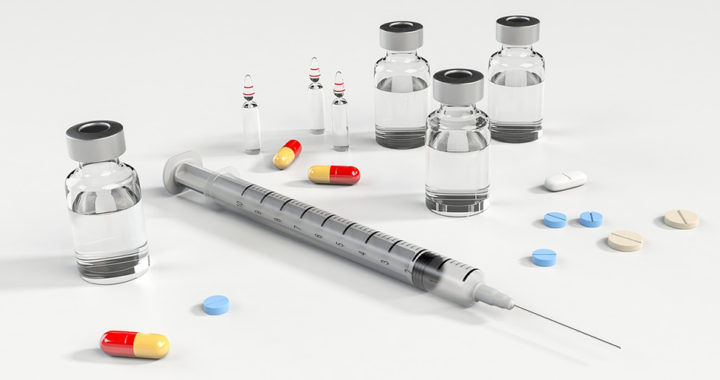A psychoactive drug is a chemical substance generally used for altering brain functions whether for medicinal or recreational purposes. Take note that there are different classification systems to organize and classify the different types of psychoactive drugs. One system classifies these drugs according to their biological and neurological effects.
The Four Classifications of Psychoactive Drugs Based on Biological and Neurological Effects
1. Depressants
Drugs classified as depressants are used to depress the functions of the central nervous system. This depression decreases the level of arousal or the level of stimulation in certain areas of the brain.
Notable effects of depressants include lowered brain processing speed and reaction, sedation, dizziness and lack of coordination, slower heart rate, and decreased blood pressure.
Because of the manner these types of psychoactive drugs affect the central nervous system, they are used to relieve anxiety, induce sleep, and as part of anesthesia.
Examples of depressants include barbiturates or tranquilizers that are prescribed to aid in sleep or help patients calm down, and benzodiazepines such as Valium and Xanax which are also prescribed to treat insomnia or manage anxiety disorders, as well as manage seizures. Alcohol is also another example of depressants.
Other medicinal uses of depressants like barbiturates include the management of epilepsy, treatment of acute migraines or cluster headaches, and aid or primary agent in assisted suicide and capital punishment.
2. Stimulants
As opposed to depressants, stimulants excite or stimulate the central nervous system. People who take any one of these types of psychoactive drugs feel awake, alert or responsive and perceptive, and energetic.
Other effects of stimulants include increased heart rate and blood pressure, wakefulness or increased responsiveness and alertness, and nervousness or jitters. Some stimulants induce euphoria and sexual arousal.
Caffeine and nicotine are the most widely used and readily available examples of stimulants. Other examples are amphetamine, methamphetamine, and its variants such as MDMA or Ecstasy, and cocaine.
Although most of these types of psychoactive drugs are often used recreationally and legally, note that some have medicinal and pharmaceutical uses. Both medical amphetamine and methamphetamine are used to treat attention deficit hyperactivity disorder or ADHD, binge eating, and narcolepsy. Some individuals use stimulants as a cognitive performance enhancer and athletic performance enhancer.
3. Hallucinogens
This classification of psychoactive drugs is known to distort perception or induce perceptual anomalies, and affect thoughts, emotions, and consciousness. They are also known as psychedelics.
Effects include hallucinations or seeing or hearing things that are not actually present in the real world, as well as heightened sensations or exaggerated perceptions from either one of the senses.
It is interesting to note that hallucinogens also share most of the major effects of depressants and stimulants. Their effects are dependent on the personality and disposition of the user. Some might feel down while others might be uplifted and positively connected.
Examples of hallucinogens include lysergic acid diethylamide or LSD, psilocybin which can be found in psychedelic mushrooms, and phencyclidine or PCP or Angel Dust.
4. Opiates
Psychoactive drugs that have effects similar to depressants but with added analgesic or pain-relieving functions are classified as opiates. Note that the primary difference of opiates from depressants is that they act on opioid receptors to produce analgesic effects
Hence, similar to depressants, opiates depress the central nervous system and can also decrease heart rate and blood pressure. However, unlike depressants, they also relieve pain due to their actions on the peripheral and central nervous systems.
Note that opiates are traditionally used to refer to natural varieties such as opium or poppy tears while opioids are used to refer to both natural and synthetic varieties. Morphine, heroin, codeine, and thebaine are some of the common examples of opiates.
Medical uses of opiates and opioids include management of pain and as anesthesia, reversing opioid overdose and as replacement therapy for opioid use disorder, suppression of diarrhea, and suppression of cough.
Takeaways and Reminders on the Four Classifications of Psychoactive Drugs
Take note that depressants and stimulants do not necessarily work similarly at the biological and neurological level even though these two classes of psychoactives have opposite effects. This means that a person cannot use a depressant to counter the effect of a stimulant.
It is also worth noting that the four classifications of psychoactive drugs do not collectively form a perfect classification system. Some drugs have effects that might gear more on a particular class depending on dosage and formulation. For example, an MDMA might be used as a hallucinogen. Cannabis or marijuana can either be a hallucinogen or a depressant.
There are also different ways to classify or categorize the different types of psychoactive drugs. The legal status of a particular substance and the potential for abuse or degree of addictiveness are other common classification criteria used in other classification systems.
